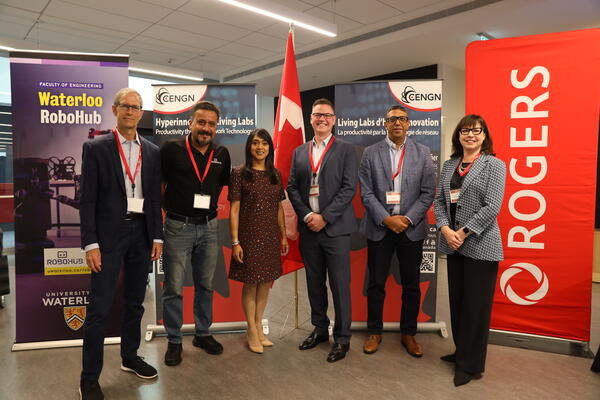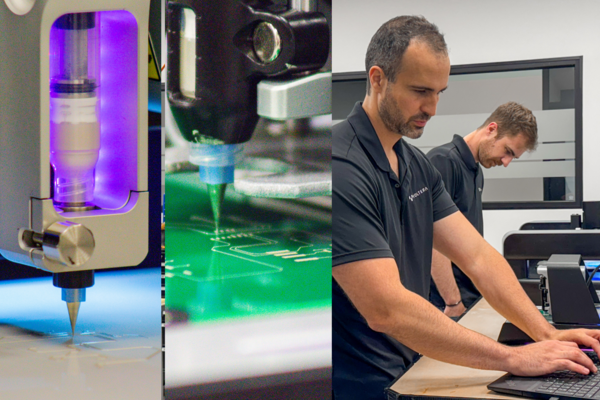
Charge your phone while you shovel - and shiver
Waterloo researcher develops technology that harvests energy from the motion and vibrations of activities like shovelling snow

Waterloo researcher develops technology that harvests energy from the motion and vibrations of activities like shovelling snow
By Carol Truemner Faculty of EngineeringWould the pain and agony of shovelling snow be less if you knew you were charging your cell phone at the same time as you shivered?
Behrad Khamesee, a professor in the Waterloo’s Department of Mechanical and Mechatronics Engineering, along with his former graduate student Pratik Patel, have developed new technology that would allow a cell phone to be charged by the energy created when operating a snowblower or while shoveling snow.
This unique form of multi-tasking is possible through a 3D multi-directional energy harvester Khamesee says is the first of its kind.
 “What makes it different is that it’s a single unit unlike other multi units that have been developed,” says Khamesee. Unlike similar devices, Khamesee’s patent-pending technology can harvest energy that comes from any direction by converting it into linear motion. Most existing harvesters can only harvest energy in one direction, he adds.
“What makes it different is that it’s a single unit unlike other multi units that have been developed,” says Khamesee. Unlike similar devices, Khamesee’s patent-pending technology can harvest energy that comes from any direction by converting it into linear motion. Most existing harvesters can only harvest energy in one direction, he adds.
Less expensive, lighter and easier to install
The technology will continuously recharge batteries through vibrations caused by motion. Because just one unit is required instead of the usual three, the new technology is more cost efficient, much lighter, and easier to incorporate into devices. It’s also simple to mount directly onto machines like snowblowers and lawnmowers. It can also be strapped onto your arm or leg to produce energy while walking.
Energy harvester can light up snowboards and licence plates
It could be used to light up snowboards or other recreational equipment. “It can also light up licence plates on vehicles and eliminate the expensive wiring now used,” adds Khamesee.
Other potential uses for the harvester include health monitoring devices and wireless sensors for detecting cracks and damage to buildings and bridges.
Khamesee and Patel, who recently graduated with a master’s degree in mechanical engineering, spent about six months developing the 3D version of their research.
They didn’t need to go far for some of the parts for their prototype –many were designed and produced using the 3D- printer located in Engineering 5’s Sedra Student Design Centre.

Read more
Here are the people and events behind some of this year’s most compelling Waterloo stories

Read more
Living Lab initiative will help Canadian companies test and validate products and services at Waterloo’s RoboHub

Read more
Voltera prints electronics making prototyping faster and more affordable — accelerating research to market-ready solutions
The University of Waterloo acknowledges that much of our work takes place on the traditional territory of the Neutral, Anishinaabeg, and Haudenosaunee peoples. Our main campus is situated on the Haldimand Tract, the land granted to the Six Nations that includes six miles on each side of the Grand River. Our active work toward reconciliation takes place across our campuses through research, learning, teaching, and community building, and is co-ordinated within the Office of Indigenous Relations.